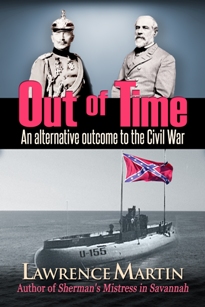The Preface is below. Click here to read two excerpts from the book. Use back button to return to this web page.
PREFACE
Sherman's Mistress in Savannah is a work of historical fiction. The history part revolves around the occupation of Savannah by General William Tecumseh Sherman and his Union army December 1864 – January 1865. Characters in the story include many real people besides Sherman: Brig-General John W. Geary, Major Henry Hitchcock, Mayor Richard Arnold, Josephine Clay Habersham, Fanny Yates Cohen, Lt. Cornelius Platter, Englishman Charles Green, businessman Gazaway Bugg Lamar, Reverend Garrison Frazier, Secretary of War Edwin M. Stanton and others. Though of necessity all dialogue is invented, the general outline of events is a matter of historical record. Many of these people left written documents, such as Sherman’s Memoirs, the correspondence of war generals, and the diaries of Cohen, Platter and Hitchcock. In the book passages from historical documents are in bold face and bracketed by asterisks.
The principal fiction involves Belle Anderson, Belle’s family, and her unique relationship with General Sherman during the Savannah occupation. Gustav Heinz and Savannah Gardens, Sophie, Captain Parker, Sarah Malone and Elizabeth Elliott are entirely fictional, as are several minor characters. However, when Belle interacts with historical figures some of the invented dialogue acknowledges facts of the era, e.g., Sherman’s Field Orders, Fanny Cohen’s diary, Josephine Habersham’s family tragedy, Henry Hitchcock’s military role. (An appendix lists all the Civil War-era historical characters mentioned anywhere in the book.)
Civil War fiction is a popular genre, with many titles to choose from: Margaret Mitchell’s Gone With the Wind, E.L. Doctorow’s The March, Michael Shaara’s The Killer Angels, John Jakes’ Savannah: Or a Gift for Mr. Lincoln, James Reasoner’s Savannah, and others. The war lasted four years, resulted in the death of 620,000 soldiers, abolished slavery and saved the Union. Within those years took place hundreds of battles and major events that could serve as canvas for painting the emotions, thoughts and dialogue of historical figures, and for the creation of new characters. If the history is made interesting, the reader can learn something while enjoying the author’s story. And there is always this to ponder: the story may seem implausible, but it is not impossible.
Lawrence Martin
September, 2012

